I'm trying to understand the characteristics of bjt in different modes of operation . .when it comes to the saturation mode of operation in common base configuration ,some books says that the collector current becomes zero and some say it increase rapidly independent of the emitter current.so, which is correct
- 1
- 2
-
Try read this: https://electronics.stackexchange.com/questions/276146/a-question-about-vce-of-an-npn-bjt-in-saturation-region/276266#276266 – G36 Aug 10 '19 at 09:24
-
https://forum.allaboutcircuits.com/threads/transistor-in-active-and-saturation-region.159013/page-4#post-1389338 – G36 Aug 10 '19 at 09:29
1 Answers
First Example Text
Your first example is from a micro-electronic viewpoint. It's the kind of description likely found in a textbook on micro-electronics.
Here's a diagram I took from an older edition of Jacob Millman's "Microelectronics: Digital and Analog Circuits and Systems":
That diagram is, of course, for the active-mode behavior. When going into saturation (because the external circuit causes that to happen), then a somewhat different diagram would be chosen.
Your first description is addressing an audience that wants a micro-electronic viewpoint. They are less interested in how the surrounding circuit causes saturation and instead prefer a description of what's happening inside, when it does happen.
Many electronic designers learn about this exactly once in their classwork and then they never have to bother with it again, when in the work-place.
Second Example Text
Here, the author is targeting more of an electronic perspective than a micro-electronic one. The author is using an Ebers-Moll perspective, which is simple and useful. (I discuss three different equivalent models using this perspective, here.)
Here, the CB junction is considered like any other diode. It can either be forward-biased or reverse-biased. In this viewpoint, saturation has the CB diode forward-biased. This forward-biased diode follows the usual rules and this includes the exponential relationship of diode current to applied diode voltage.
In this view, the base current must supply both the necessary recombination current needed for transport of current from collector to emitter and also the forward-biased CB current, too, which is not then available for recombination.
This forward-biased CB junction current rises very rapidly with increasing forward-biased voltage, just like any other diode. The total emitter current will then include this CB forward-biased current along with the collector-to-emitter current which depends upon recombination current from the base that is now competing with the forward-biased CB junction for base current.
Third Example Text
The important detail to note in this case is that the emitter current is taken as a constant. As the BJT goes into saturation, there is an ever-increasing forward-biased CB junction current. And this current rises exponentially with the CB junction forward-biased magnitude. So, as the BJT goes deeper into saturation, more and more of the "fixed" emitter current comes from the base and therefore by implication less and less of it from the collector.
The emitter current is fixed in value. So what else can happen?? It has to work that way.
The other point the author makes in this case is that the forward-biased CB junction is "mostly ignorable" when it is biased at less than about \$400\:\text{mV}\$. And so, they appear to claim that the BJT isn't saturated until this forward-bias voltage magnitude is reached or exceeded. They suggest that you don't have to "worry" much about saturation until this point is reached. (This is more of a "BJT as a switch" vs "BJT as an active mode device" view. The BJT really isn't a saturated switch until at least this forward-biased voltage magnitude is reached. But it puts more focus on the switch aspect.)
I kind of disagree with that view because even though the forward-biased CB junction isn't a significant contributor to the emitter current, it is a significant competitor that steals current away from its recombination role in the BJT. So I tend to avoid using this viewpoint. But I can see where it comes from.
I prefer to see saturation as starting to occur right at the point where the CB junction just starts to be forward-biased. In this view, the saturation is considered light or modest because it's not a significant competitor for recombination current yet but it is just starting to compete. As the BJT goes into deeper saturation (and the CB junction's forward-biased magnitude increases), then this competition increases dramatically (that rapid rise in the forward-biased CB junction current with slightly increasing magnitude) and the BJT moves rapidly into deep saturation where it is, essentially, a switching device.
Summary
You just need to realize that each author is dealing with a specific circumstance as well as talking to a certain audience.
